Blog
Our Top Blog Posts
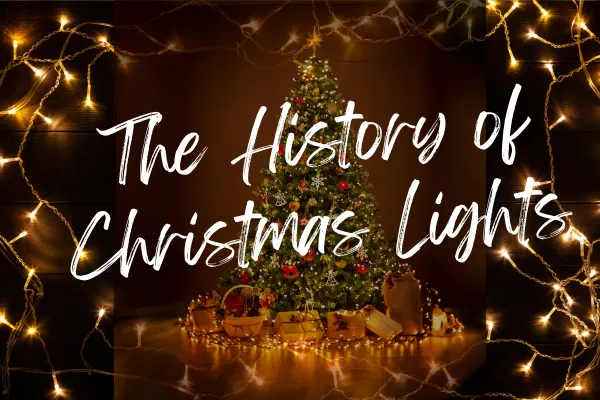
From Candle Glow to LED Show: The Evolution of Christmas Tree Illumination
Have you ever wondered how a tradition as beautiful yet perilous as placing candles on a Christmas tree evolved into the vibrant and safe LED displays we see today? You're about to embark on a journey that will take you from the humble beginnings of the candlelit Christmas tree, through the advent of electric illumination, and all the way to the modern, energy-efficient LED lights. As you explore this fascinating history, you'll see how the accessibility of tree lights has expanded over time and how outdoor displays have risen in popularity. But remember, there's more to this evolution than meets the eye; each shift in lighting trends reflects broader societal and technological changes. So, are you ready to illuminate the untold story behind your twinkling Christmas tree lights?

Candlelit Christmas Origins
Delving deeper into the historical tapestry of candlelit Christmases, we uncover that this enchanting tradition originated in 16th century Germany, embodying a poignant symbol of Christ as the light of the world. In those times, German families initiated the practice of placing a candle in their windows. This act was more than just a gesture of warmth and hospitality; it was a deeply spiritual representation, signifying Jesus Christ's role as the bringer of spiritual enlightenment and hope to mankind.
As we journey through history, we find that the custom of using candles extended beyond the mere decoration of windows. By the early 17th century, the use of candles to embellish Christmas trees had become prevalent. However, this practice was fraught with danger due to the significant fire risks it posed. Consequently, families adopted the cautious approach of lighting these candles only for brief moments, with preparations such as buckets of water and sand at the ready for any emergency.
The 18th century saw this captivating tradition make its way to American shores, carried by German immigrants. It's fascinating to note that the reception in America was initially lukewarm. The prevailing American sentiment at the time was to observe Christmas as a period for churchgoing and prayer, rather than for indulging in elaborate festive displays. Nevertheless, as the 19th century reached its midpoint, the allure of candlelit Christmas trees had woven its magic across the United States, transforming them into a widespread phenomenon.
Curiosity might arise about the practicalities of this tradition, specifically how candles were affixed to the branches of Christmas trees. The methods employed were either by melting wax to secure the candles or by pinning them directly to the tree. This meticulous and labor-intensive task was typically performed on Christmas Eve, adding to the anticipation and charm of the occasion. It’s apparent why the advent of electric Christmas lights in the early 20th century gradually supplanted the candlelit method. Yet, despite the evolution of how Christmas trees are illuminated, the core symbolism endures. The Christmas tree, regardless of its method of lighting, continues to stand as a powerful emblem of hope and light during the winter's gloom, echoing the enduring message of the candlelit traditions of yesteryears.
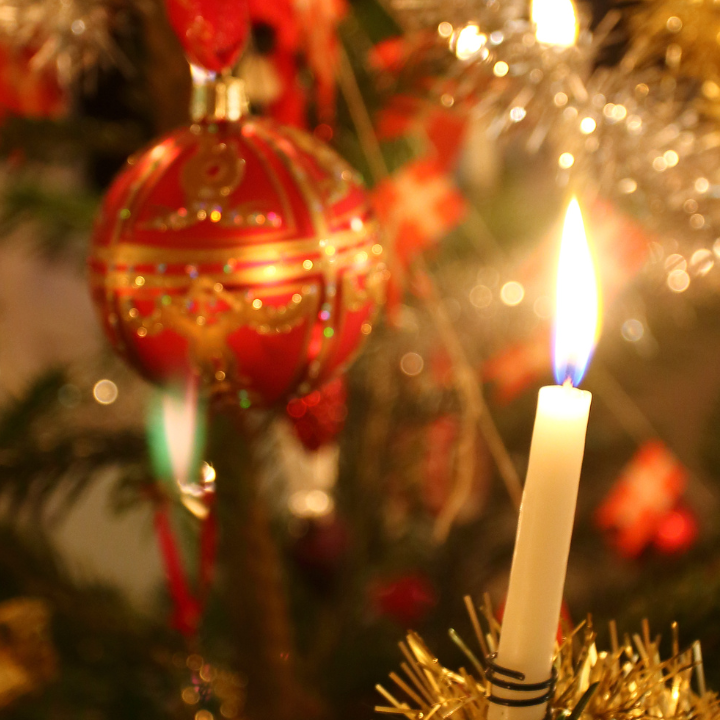
Arrival of Electric Illumination
The enchanting glow of twinkling lights adorning Christmas trees, a sight many of us cherish during the festive season, marks a significant evolution from the era of candle-lit branches. This transition to electric lighting, a hallmark of the early 20th century, introduced a safer and more practical method for infusing the holiday season with its characteristic magical ambiance.
Tracing back to the origins of this transformation, acquiring electric lights for a Christmas tree was not always as straightforward as a quick trip to the local store. The pioneering demonstration of an electrically illuminated Christmas tree was orchestrated by Edward H. Johnson, a colleague of the famed inventor Thomas Edison, in the year 1882. Despite this early inception, the widespread adoption and affordability of electric Christmas lights did not materialize until approximately 1917. Before this period, illuminating a Christmas tree with electric lights was a complex endeavor, necessitating access to a generator and a substantial level of technical savvy.
It was Ralph Morris, an American inventor, who is celebrated for devising the first string of electric Christmas lights in the early years of the 20th century. Drawing inspiration from the illuminated telephone switchboards of his time, Morris sought to adapt this technology for festive purposes, thereby miniaturizing it for use on Christmas trees. Although these initial electric lights were rudimentary compared to the sophisticated LED lights we are accustomed to today, they laid the groundwork for a revolutionary change in the way Christmas trees were illuminated.
Throughout the 20th century, the adoption of electric Christmas lights gained momentum, supported by advancements in technology and manufacturing. Esteemed companies such as General Electric and NOMA entered the fray, mass-producing electric lights and thereby rendering the magical sparkle of Christmas trees accessible to households far and wide. This era saw electric Christmas lights evolve in popularity, affordability, and diversity, enabling families to effortlessly incorporate the twinkling allure of these lights into their holiday decorations. The progression from candlelight to electric lights not only enhanced the safety and convenience of holiday decorating but also enriched the festive atmosphere with a luminous charm that continues to captivate hearts around the globe.

Expanding Accessibility of Lights
As the wheels of technology turned, the realm of Christmas lights underwent a remarkable transformation, broadening the horizons of availability and accessibility for countless individuals to join in this radiant festive tradition. Initially, these glimmering decorations were considered a luxury, accessible only to a select few who could afford such extravagance. Today, however, Christmas lights have become as integral to the holiday season as the celebration itself, available ubiquitously across retail stores and online platforms, offering a dazzling array of options to suit every preference and budget.
The journey towards the mass production of Christmas lights commenced in earnest at the dawn of the 20th century, charting a steady course towards the widespread popularity we witness today. The evolution is evident – from the bulky, vibrant bulbs that adorned the Christmas trees of yesteryears to the compact, energy-efficient LED lights that now illuminate our festive décor. This shift was propelled by advancements in manufacturing technologies and a reduction in production costs, making the captivating glow of Christmas lights a universal delight enjoyed by families across the globe.
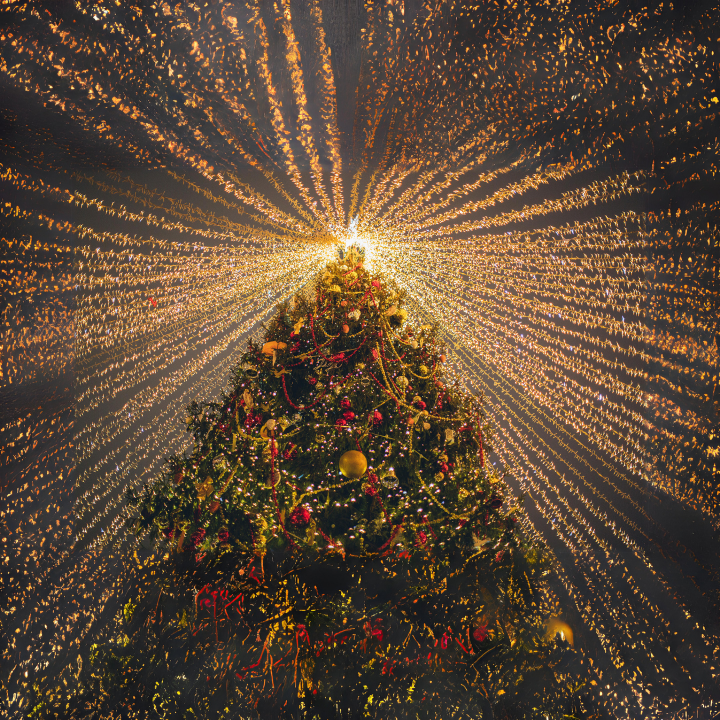
However, the transformation of Christmas lights extends beyond mere affordability. Advances in lighting technology have ushered in an era of enhanced safety and versatility for holiday decorations. The concerns of yore, regarding bulbs that ran hot enough to pose fire risks, have been allayed by the advent of modern lights that remain cool to the touch, available in a spectrum of colors to suit any decorating scheme. These lights offer the flexibility to adorn not just Christmas trees but also mantles, balconies, and even to choreograph them in sync with beloved holiday melodies, adding a personalized touch to festive celebrations.
Moreover, the shift towards LED technology signifies a leap forward in environmental stewardship. LED lights consume a fraction of the energy required by traditional incandescent bulbs, aligning holiday cheer with eco-friendly practices. This not only allows individuals to deck their halls with the vibrant spirit of the season but also contributes positively to environmental conservation efforts.
The democratization of access to Christmas lights has indeed redefined the essence of holiday celebrations, infusing them with an increased measure of joy, color, and enchantment. It’s a testament to how technological progress can enhance our traditions, making the magic of the holiday season more inclusive and vibrant, allowing us to create memories that shine brightly in our hearts long after the festive lights are dimmed.
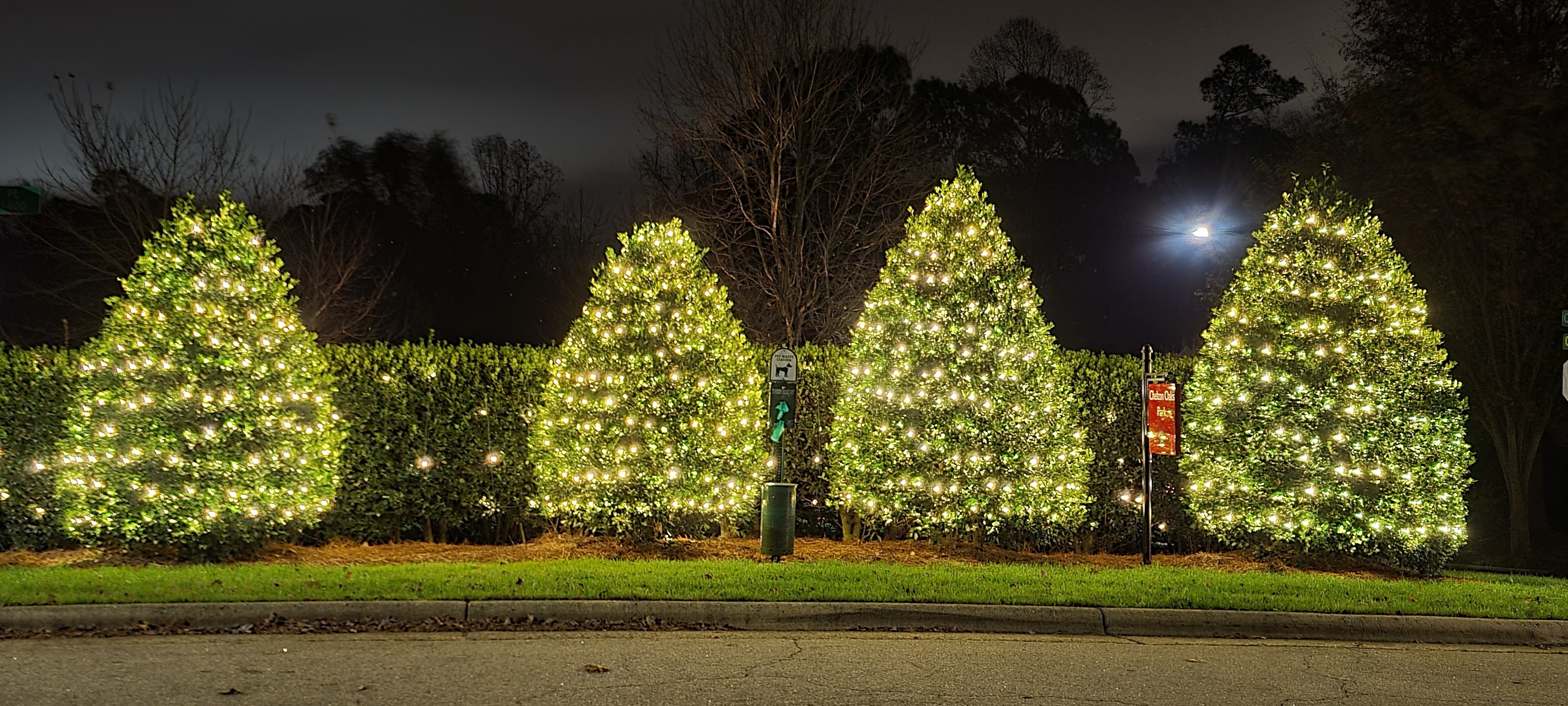
The Rise of Outdoor Displays
Over recent years, there has been a remarkable surge in the prominence of outdoor light displays during the festive season, serving as a vivid testament to the expanding popularity of this cherished tradition. What originally began as the modest practice of adorning a single tree with lights has magnificently transformed into an all-encompassing festival of illumination. Homes, businesses, and public spaces alike are now bedecked with an array of lights, turning the bleak winter evenings into a mesmerizing spectacle of vibrant colors and radiant light, a true wonderland that captivates the imagination and warms the heart.
This phenomenon is perhaps most palpable in residential neighborhoods, where the spirit of friendly competition ignites a dazzling display of creativity and festive cheer. Neighbors engage in a lighthearted rivalry, each striving to present the most spectacular holiday tableau. Front yards come to life with illuminated figures of Santas, reindeer, snowmen, and meticulously detailed nativity scenes. Rooftops shimmer with the glow of twinkling icicles, while trees are enrobed in multicolored lights, and oversized ornaments dangle from their boughs. This goes beyond mere competition; it is a communal expression of joy, a way for individuals to share their holiday spirit, showcase their creativity, and contribute to the collective celebration of the season.
Moreover, the tradition of outdoor light displays extends far beyond the confines of private homes, embracing cities and towns worldwide. Public spaces, from parks to city squares, are transformed into canvases for spectacular light installations, drawing the admiration of both locals and visitors. These elaborate displays, ranging from the intricate light arrangements adorning the Eiffel Tower in Paris to the towering splendor of the Rockefeller Center Christmas tree in New York City, have risen to iconic status, symbolizing the essence of holiday celebrations across the globe.
The proliferation of outdoor light displays signifies more than just a trend in holiday decoration; it marks a profound evolution in the way we celebrate and share the joy of the season. It reflects not only advancements in lighting technology, which have made such displays more accessible and sustainable, but also a deeper human impulse to connect, celebrate, and spread happiness. These luminous exhibitions stand as a testament to the enduring appeal of holiday traditions, showcasing our collective desire to transform the darkness of winter into a season of light, color, and communal joy,uniting us in a global celebration of the festive spirit.
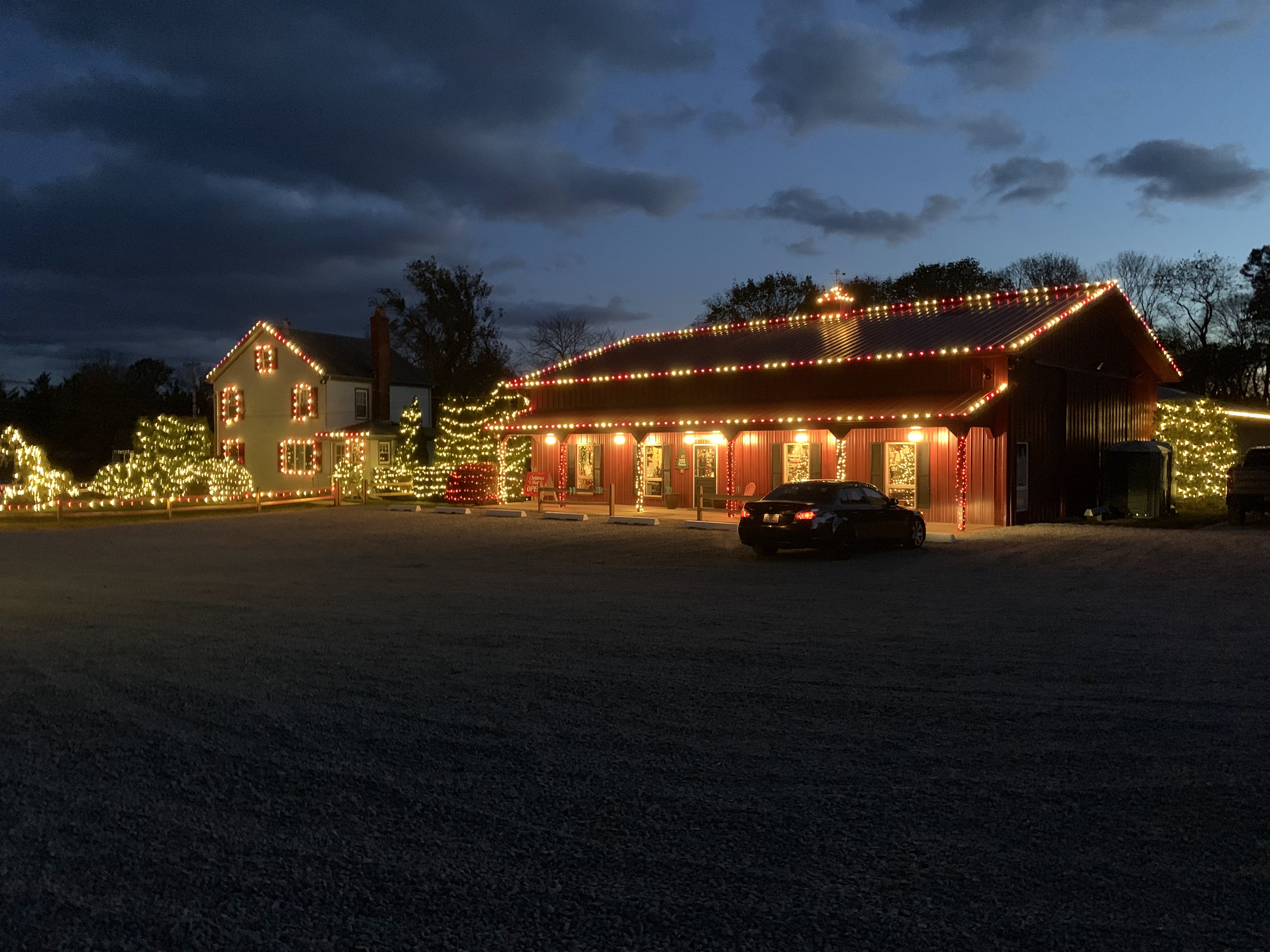
Modern Trends in Tree Lighting
The tradition of decorating the Christmas tree takes on a new dimension with the advent of modern trends in tree lighting. These trends are not just about illumination; they represent a fusion of creativity, innovation, and technology, transforming the simple act of lighting a tree into an art form.
Gone are the days when the warm glow of incandescent bulbs was the hallmark of holiday cheer. In today's eco-conscious world, LED lights reign supreme. These lights are celebrated for their energy efficiency, longevity, and the sheer variety of colors and styles they offer. The shift towards LED technology in holiday lighting reflects a broader trend towards sustainability and energy conservation, aligning the joyous tradition of holiday decorating with the values of environmental stewardship.
But the revolution in holiday lighting doesn't stop at the switch from incandescent to LED bulbs. The way we use these lights is undergoing a dramatic transformation as well. Programmable LED lights are at the forefront of this change, offering unprecedented control over the aesthetic of holiday decorations. With just a few clicks on a smartphone or remote control, you can alter the color scheme and patterns of your tree's lights, transitioning seamlessly from a serene, white light display to a vibrant, multi-colored spectacle. The ability to synchronize these lights with music adds an additional layer of dynamism, creating immersive, rhythm-driven light shows that bring the holiday spirit to life in a way that's both visually and audibly enchanting.
Another noteworthy trend is the rise of solar-powered lights. As consumers become more environmentally conscious, the appeal of solar lighting for holiday decorations grows. These lights offer a sustainable alternative to traditional electric lights, harnessing the power of the sun to create a festive glow without contributing to the monthly electricity bill. Their automatic on-off feature, activated by the falling darkness, adds a layer of convenience, ensuring that your holiday display shines brightly each night without any additional effort on your part.
These innovations in Christmas tree lighting reflect a broader movement towards integrating technology and environmental responsibility into our holiday traditions. The modern Christmas tree, adorned with LED, programmable, and solar-powered lights, stands not only as a symbol of the season but also as a testament to the ways in which tradition and technology can come together to create something truly magical. As we look towards the future, it's clear that the possibilities for creativity and innovation in holiday lighting are as boundless as the spirit of the season itself.

How Do Different Cultures Around the World Light Their Christmas Trees?
Different cultures illuminate their Christmas trees in a variety of ways. In America, you'll typically see electric lights, while in Ukraine, they use spiderweb-shaped decorations to capture the light. In Japan, origami birds often adorn the trees. Brazil's Christmas trees might shine with cotton, symbolizing snow. So, it's not just about the lights, it's also the unique decorations that reflect their traditions and beliefs, making each tree across the world beautifully unique.
What Are Some Safety Precautions to Take When Using Candles or Lights on a Christmas Tree?
When using candles or lights on your Christmas tree, it's key to prioritize safety. Always keep candles at a safe distance from the tree and never leave them unattended. For lights, check for any damaged cords or loose bulbs before hanging them. Don't overload power strips and always switch off the lights before bed or leaving the house. Using a flame-resistant artificial tree can also reduce the risk of fire.
What Are the Environmental Impacts of Using LED Lights Versus Traditional Bulbs on Christmas Trees?
You're making a greener choice when you opt for LED lights on your Christmas tree. They're energy-efficient, using up to 80% less power than traditional bulbs. This means fewer carbon emissions from power plants. They also last longer, reducing waste. However, they do contain small amounts of heavy metals, so it's important to recycle them properly. Overall, LEDs are a more environmentally friendly option for lighting up your festive season.
Has the Introduction of LED Lights Affected the Tradition of Decorating Christmas Trees in Any Way?
Yes, the introduction of LED lights has changed the way you decorate your Christmas tree. They're safer, more energy-efficient, and come in a variety of colors and styles. You're no longer limited to the traditional warm glow. Now, you can program your lights to change colors, blink, or even sync with your holiday music. It's a whole new world of Christmas tree decorating!
How Has the Evolution of Christmas Tree Illumination Influenced Other Holiday Decorations?
The evolution of Christmas tree illumination has greatly influenced other holiday decorations. You can now see LED lights used extensively not only on trees but in other festive decor like wreaths, garlands, and outdoor displays. They're bright, energy-efficient, and much safer than traditional candles. Plus, they come in all sorts of colors and patterns, so you're not limited in your decorating options. This evolution has really expanded the possibilities for holiday cheer.
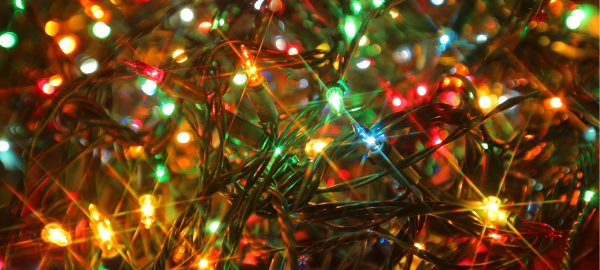
What makes solar-powered Christmas lights environmentally friendly?
Solar-powered Christmas lights are environmentally friendly because they rely on renewable solar energy to operate, significantly reducing the consumption of electricity from non-renewable sources. This not only helps to lower energy bills but also contributes to reducing the overall carbon footprint associated with holiday lighting. Additionally, the automatic on-off feature of solar lights minimizes energy waste, further enhancing their eco-friendly appeal.
How long do LED Christmas lights last compared to traditional bulbs?
LED Christmas lights typically have a much longer lifespan than traditional incandescent bulbs. While incandescent lights may last for about 1,000 to 2,000 hours, LED lights can last for 25,000 to 50,000 hours or more. This extended lifespan means LED lights need to be replaced less frequently, making them a more cost-effective and environmentally sustainable option for holiday decorating.
Can I sync my LED Christmas lights with music?
Yes, many programmable LED Christmas lights now have the capability to sync with music. This feature allows the lights to change patterns, flash, dim, or change colors in coordination with the music being played, creating a dynamic and immersive holiday display. Syncing lights with music can be achieved through specific controllers or smartphone apps designed for this purpose, adding a lively and entertaining element to holiday decorations.
Are there any safety concerns with using LED Christmas lights?
LED Christmas lights are generally safer than traditional incandescent lights due to their lower heat output. Incandescent bulbs can become quite hot and pose a fire risk if in contact with flammable materials. In contrast, LED lights remain cool to the touch, greatly reducing the risk of fire. Additionally, LED lights are more durable and less likely to break, further enhancing their safety profile. However, as with any electrical device, it's important to follow manufacturer instructions and safety guidelines to ensure a safe and joyful holiday season.


From Candle Glow to LED Show: The Evolution of Christmas Tree Illumination
Have you ever wondered how a tradition as beautiful yet perilous as placing candles on a Christmas tree evolved into the vibrant and safe LED displays we see today? You're about to embark on a journey that will take you from the humble beginnings of the candlelit Christmas tree, through the advent of electric illumination, and all the way to the modern, energy-efficient LED lights. As you explore this fascinating history, you'll see how the accessibility of tree lights has expanded over time and how outdoor displays have risen in popularity. But remember, there's more to this evolution than meets the eye; each shift in lighting trends reflects broader societal and technological changes. So, are you ready to illuminate the untold story behind your twinkling Christmas tree lights?

Candlelit Christmas Origins
Delving deeper into the historical tapestry of candlelit Christmases, we uncover that this enchanting tradition originated in 16th century Germany, embodying a poignant symbol of Christ as the light of the world. In those times, German families initiated the practice of placing a candle in their windows. This act was more than just a gesture of warmth and hospitality; it was a deeply spiritual representation, signifying Jesus Christ's role as the bringer of spiritual enlightenment and hope to mankind.
As we journey through history, we find that the custom of using candles extended beyond the mere decoration of windows. By the early 17th century, the use of candles to embellish Christmas trees had become prevalent. However, this practice was fraught with danger due to the significant fire risks it posed. Consequently, families adopted the cautious approach of lighting these candles only for brief moments, with preparations such as buckets of water and sand at the ready for any emergency.
The 18th century saw this captivating tradition make its way to American shores, carried by German immigrants. It's fascinating to note that the reception in America was initially lukewarm. The prevailing American sentiment at the time was to observe Christmas as a period for churchgoing and prayer, rather than for indulging in elaborate festive displays. Nevertheless, as the 19th century reached its midpoint, the allure of candlelit Christmas trees had woven its magic across the United States, transforming them into a widespread phenomenon.
Curiosity might arise about the practicalities of this tradition, specifically how candles were affixed to the branches of Christmas trees. The methods employed were either by melting wax to secure the candles or by pinning them directly to the tree. This meticulous and labor-intensive task was typically performed on Christmas Eve, adding to the anticipation and charm of the occasion. It’s apparent why the advent of electric Christmas lights in the early 20th century gradually supplanted the candlelit method. Yet, despite the evolution of how Christmas trees are illuminated, the core symbolism endures. The Christmas tree, regardless of its method of lighting, continues to stand as a powerful emblem of hope and light during the winter's gloom, echoing the enduring message of the candlelit traditions of yesteryears.

Arrival of Electric Illumination
The enchanting glow of twinkling lights adorning Christmas trees, a sight many of us cherish during the festive season, marks a significant evolution from the era of candle-lit branches. This transition to electric lighting, a hallmark of the early 20th century, introduced a safer and more practical method for infusing the holiday season with its characteristic magical ambiance.
Tracing back to the origins of this transformation, acquiring electric lights for a Christmas tree was not always as straightforward as a quick trip to the local store. The pioneering demonstration of an electrically illuminated Christmas tree was orchestrated by Edward H. Johnson, a colleague of the famed inventor Thomas Edison, in the year 1882. Despite this early inception, the widespread adoption and affordability of electric Christmas lights did not materialize until approximately 1917. Before this period, illuminating a Christmas tree with electric lights was a complex endeavor, necessitating access to a generator and a substantial level of technical savvy.
It was Ralph Morris, an American inventor, who is celebrated for devising the first string of electric Christmas lights in the early years of the 20th century. Drawing inspiration from the illuminated telephone switchboards of his time, Morris sought to adapt this technology for festive purposes, thereby miniaturizing it for use on Christmas trees. Although these initial electric lights were rudimentary compared to the sophisticated LED lights we are accustomed to today, they laid the groundwork for a revolutionary change in the way Christmas trees were illuminated.
Throughout the 20th century, the adoption of electric Christmas lights gained momentum, supported by advancements in technology and manufacturing. Esteemed companies such as General Electric and NOMA entered the fray, mass-producing electric lights and thereby rendering the magical sparkle of Christmas trees accessible to households far and wide. This era saw electric Christmas lights evolve in popularity, affordability, and diversity, enabling families to effortlessly incorporate the twinkling allure of these lights into their holiday decorations. The progression from candlelight to electric lights not only enhanced the safety and convenience of holiday decorating but also enriched the festive atmosphere with a luminous charm that continues to captivate hearts around the globe.

Expanding Accessibility of Lights
As the wheels of technology turned, the realm of Christmas lights underwent a remarkable transformation, broadening the horizons of availability and accessibility for countless individuals to join in this radiant festive tradition. Initially, these glimmering decorations were considered a luxury, accessible only to a select few who could afford such extravagance. Today, however, Christmas lights have become as integral to the holiday season as the celebration itself, available ubiquitously across retail stores and online platforms, offering a dazzling array of options to suit every preference and budget.
The journey towards the mass production of Christmas lights commenced in earnest at the dawn of the 20th century, charting a steady course towards the widespread popularity we witness today. The evolution is evident – from the bulky, vibrant bulbs that adorned the Christmas trees of yesteryears to the compact, energy-efficient LED lights that now illuminate our festive décor. This shift was propelled by advancements in manufacturing technologies and a reduction in production costs, making the captivating glow of Christmas lights a universal delight enjoyed by families across the globe.

However, the transformation of Christmas lights extends beyond mere affordability. Advances in lighting technology have ushered in an era of enhanced safety and versatility for holiday decorations. The concerns of yore, regarding bulbs that ran hot enough to pose fire risks, have been allayed by the advent of modern lights that remain cool to the touch, available in a spectrum of colors to suit any decorating scheme. These lights offer the flexibility to adorn not just Christmas trees but also mantles, balconies, and even to choreograph them in sync with beloved holiday melodies, adding a personalized touch to festive celebrations.
Moreover, the shift towards LED technology signifies a leap forward in environmental stewardship. LED lights consume a fraction of the energy required by traditional incandescent bulbs, aligning holiday cheer with eco-friendly practices. This not only allows individuals to deck their halls with the vibrant spirit of the season but also contributes positively to environmental conservation efforts.
The democratization of access to Christmas lights has indeed redefined the essence of holiday celebrations, infusing them with an increased measure of joy, color, and enchantment. It’s a testament to how technological progress can enhance our traditions, making the magic of the holiday season more inclusive and vibrant, allowing us to create memories that shine brightly in our hearts long after the festive lights are dimmed.

The Rise of Outdoor Displays
Over recent years, there has been a remarkable surge in the prominence of outdoor light displays during the festive season, serving as a vivid testament to the expanding popularity of this cherished tradition. What originally began as the modest practice of adorning a single tree with lights has magnificently transformed into an all-encompassing festival of illumination. Homes, businesses, and public spaces alike are now bedecked with an array of lights, turning the bleak winter evenings into a mesmerizing spectacle of vibrant colors and radiant light, a true wonderland that captivates the imagination and warms the heart.
This phenomenon is perhaps most palpable in residential neighborhoods, where the spirit of friendly competition ignites a dazzling display of creativity and festive cheer. Neighbors engage in a lighthearted rivalry, each striving to present the most spectacular holiday tableau. Front yards come to life with illuminated figures of Santas, reindeer, snowmen, and meticulously detailed nativity scenes. Rooftops shimmer with the glow of twinkling icicles, while trees are enrobed in multicolored lights, and oversized ornaments dangle from their boughs. This goes beyond mere competition; it is a communal expression of joy, a way for individuals to share their holiday spirit, showcase their creativity, and contribute to the collective celebration of the season.
Moreover, the tradition of outdoor light displays extends far beyond the confines of private homes, embracing cities and towns worldwide. Public spaces, from parks to city squares, are transformed into canvases for spectacular light installations, drawing the admiration of both locals and visitors. These elaborate displays, ranging from the intricate light arrangements adorning the Eiffel Tower in Paris to the towering splendor of the Rockefeller Center Christmas tree in New York City, have risen to iconic status, symbolizing the essence of holiday celebrations across the globe.
The proliferation of outdoor light displays signifies more than just a trend in holiday decoration; it marks a profound evolution in the way we celebrate and share the joy of the season. It reflects not only advancements in lighting technology, which have made such displays more accessible and sustainable, but also a deeper human impulse to connect, celebrate, and spread happiness. These luminous exhibitions stand as a testament to the enduring appeal of holiday traditions, showcasing our collective desire to transform the darkness of winter into a season of light, color, and communal joy,uniting us in a global celebration of the festive spirit.

Modern Trends in Tree Lighting
The tradition of decorating the Christmas tree takes on a new dimension with the advent of modern trends in tree lighting. These trends are not just about illumination; they represent a fusion of creativity, innovation, and technology, transforming the simple act of lighting a tree into an art form.
Gone are the days when the warm glow of incandescent bulbs was the hallmark of holiday cheer. In today's eco-conscious world, LED lights reign supreme. These lights are celebrated for their energy efficiency, longevity, and the sheer variety of colors and styles they offer. The shift towards LED technology in holiday lighting reflects a broader trend towards sustainability and energy conservation, aligning the joyous tradition of holiday decorating with the values of environmental stewardship.
But the revolution in holiday lighting doesn't stop at the switch from incandescent to LED bulbs. The way we use these lights is undergoing a dramatic transformation as well. Programmable LED lights are at the forefront of this change, offering unprecedented control over the aesthetic of holiday decorations. With just a few clicks on a smartphone or remote control, you can alter the color scheme and patterns of your tree's lights, transitioning seamlessly from a serene, white light display to a vibrant, multi-colored spectacle. The ability to synchronize these lights with music adds an additional layer of dynamism, creating immersive, rhythm-driven light shows that bring the holiday spirit to life in a way that's both visually and audibly enchanting.
Another noteworthy trend is the rise of solar-powered lights. As consumers become more environmentally conscious, the appeal of solar lighting for holiday decorations grows. These lights offer a sustainable alternative to traditional electric lights, harnessing the power of the sun to create a festive glow without contributing to the monthly electricity bill. Their automatic on-off feature, activated by the falling darkness, adds a layer of convenience, ensuring that your holiday display shines brightly each night without any additional effort on your part.
These innovations in Christmas tree lighting reflect a broader movement towards integrating technology and environmental responsibility into our holiday traditions. The modern Christmas tree, adorned with LED, programmable, and solar-powered lights, stands not only as a symbol of the season but also as a testament to the ways in which tradition and technology can come together to create something truly magical. As we look towards the future, it's clear that the possibilities for creativity and innovation in holiday lighting are as boundless as the spirit of the season itself.

How Do Different Cultures Around the World Light Their Christmas Trees?
Different cultures illuminate their Christmas trees in a variety of ways. In America, you'll typically see electric lights, while in Ukraine, they use spiderweb-shaped decorations to capture the light. In Japan, origami birds often adorn the trees. Brazil's Christmas trees might shine with cotton, symbolizing snow. So, it's not just about the lights, it's also the unique decorations that reflect their traditions and beliefs, making each tree across the world beautifully unique.
What Are Some Safety Precautions to Take When Using Candles or Lights on a Christmas Tree?
When using candles or lights on your Christmas tree, it's key to prioritize safety. Always keep candles at a safe distance from the tree and never leave them unattended. For lights, check for any damaged cords or loose bulbs before hanging them. Don't overload power strips and always switch off the lights before bed or leaving the house. Using a flame-resistant artificial tree can also reduce the risk of fire.
What Are the Environmental Impacts of Using LED Lights Versus Traditional Bulbs on Christmas Trees?
You're making a greener choice when you opt for LED lights on your Christmas tree. They're energy-efficient, using up to 80% less power than traditional bulbs. This means fewer carbon emissions from power plants. They also last longer, reducing waste. However, they do contain small amounts of heavy metals, so it's important to recycle them properly. Overall, LEDs are a more environmentally friendly option for lighting up your festive season.
Has the Introduction of LED Lights Affected the Tradition of Decorating Christmas Trees in Any Way?
Yes, the introduction of LED lights has changed the way you decorate your Christmas tree. They're safer, more energy-efficient, and come in a variety of colors and styles. You're no longer limited to the traditional warm glow. Now, you can program your lights to change colors, blink, or even sync with your holiday music. It's a whole new world of Christmas tree decorating!
How Has the Evolution of Christmas Tree Illumination Influenced Other Holiday Decorations?
The evolution of Christmas tree illumination has greatly influenced other holiday decorations. You can now see LED lights used extensively not only on trees but in other festive decor like wreaths, garlands, and outdoor displays. They're bright, energy-efficient, and much safer than traditional candles. Plus, they come in all sorts of colors and patterns, so you're not limited in your decorating options. This evolution has really expanded the possibilities for holiday cheer.

What makes solar-powered Christmas lights environmentally friendly?
Solar-powered Christmas lights are environmentally friendly because they rely on renewable solar energy to operate, significantly reducing the consumption of electricity from non-renewable sources. This not only helps to lower energy bills but also contributes to reducing the overall carbon footprint associated with holiday lighting. Additionally, the automatic on-off feature of solar lights minimizes energy waste, further enhancing their eco-friendly appeal.
How long do LED Christmas lights last compared to traditional bulbs?
LED Christmas lights typically have a much longer lifespan than traditional incandescent bulbs. While incandescent lights may last for about 1,000 to 2,000 hours, LED lights can last for 25,000 to 50,000 hours or more. This extended lifespan means LED lights need to be replaced less frequently, making them a more cost-effective and environmentally sustainable option for holiday decorating.
Can I sync my LED Christmas lights with music?
Yes, many programmable LED Christmas lights now have the capability to sync with music. This feature allows the lights to change patterns, flash, dim, or change colors in coordination with the music being played, creating a dynamic and immersive holiday display. Syncing lights with music can be achieved through specific controllers or smartphone apps designed for this purpose, adding a lively and entertaining element to holiday decorations.
Are there any safety concerns with using LED Christmas lights?
LED Christmas lights are generally safer than traditional incandescent lights due to their lower heat output. Incandescent bulbs can become quite hot and pose a fire risk if in contact with flammable materials. In contrast, LED lights remain cool to the touch, greatly reducing the risk of fire. Additionally, LED lights are more durable and less likely to break, further enhancing their safety profile. However, as with any electrical device, it's important to follow manufacturer instructions and safety guidelines to ensure a safe and joyful holiday season.

Copyright ©2025 All Right Reserved website designed by christmaslights.io
Terms of Service / Privacy Policy
Have questions or need assistance?
Contact us at (855)619-LITE


